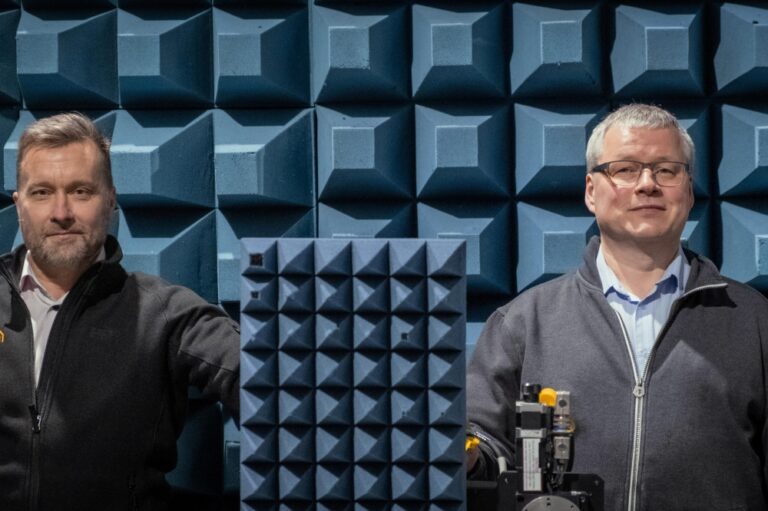NATO’s DIANA Board has approved Finland’s proposal to establish two communications test centers, one for 6G and one for cyber-secure, quantum and space technologies. A Finnish business accelerator is also part of the proposal.
The Finnish Ministry of Defense is the national responsible authority for the project, and the Finnish Technical Research Center (VTT) coordinated the preparation of the proposal in cooperation with the Ministry.
Test centers will be located at the University of Oulu and the VTT Otaniemi site. His 6G test center, coordinated by the University of Oulu, will allow companies to test his 6G network technology. The Otaniemi Test Center will focus on cyber-secure communications and testing quantum and space technologies. Test centers can, for example, evaluate concepts and technologies developed by companies and support their development.
VTT also plans to establish a business accelerator in Otaniemi, Espoo, in collaboration with Aalto University and the University of Helsinki. The accelerator focuses on future communication systems and quantum technologies and provides training for companies in business development in the defense sector. The accelerator’s services are specifically targeted at startups and small businesses with little experience in the defense and security sector.
The 6G Test Center in Oulu provides advanced wireless communications facilities, services and processes for research and business testing. The University of Oulu will operate the test center in cooperation with the VTT Technical Research Center (VTT).
“We have a long history in military communications research dating back to the late 80s. In recent years, the role of dual-use technologies has increased dramatically, making vertical defense a natural extension of our 6G Flagship research portfolio. ” said Matti Latva-aho, Director of 6G Flagship.
“The 6G Test Center will serve as an advanced global test center providing services for the development and testing of future dual-use technologies for NATO’s DIANA partners and defense industry stakeholders,” said the Department of Computer Science and Electrical Engineering. said Dean Jukka Riecki. at the University of Oulu.
“Our new 6G test center will be a high-tech wireless communications and communications research and service center. From a research and product testing perspective, we already have the capacity and capability to offer our facilities and expertise to our partners. If necessary, we will add our own 5G/6G test network and laboratory, and we will also set up a new separate facility for our test center,” says Hannu Niklautio, Research Director at the Center for Wireless Communications Research (CWC) at the University of Oulu. he added.
This test center provides users with access to world-class and rare radio frequency measurement equipment. Perform all measurements and tests related to 6G technology development in one place. 6G antennas, radios and radio frequency integrated circuits (RFICs) can now be studied in Oulu up to 330 GHz. The test center includes a large RF anechoic chamber and RFIC sensor station, which are essential for successful wireless testing.
“Our 6G test center will provide global partners of NATO’s DIANA program with test facilities for products and solutions for dual-use applications in communications and defense services. Critical application areas such as autonomous mobility and machine-to-machine ”, says Hannu Niklatio, research director of the 6G Flagship at the University of Oulu and responsible for strategic research in the defense sector.
6G frequencies and radio technology using the test center’s large antenna array will enable research aimed at combining communications and observation. For example, 6G networks aim to combine the functionality of mobile communication networks and radar by using radio equipment to not only transmit data, but also to detect objects in the environment and observe small changes in them. is. The test center will also provide a platform for integrating artificial intelligence into distributed solutions used to manage 6G networks, control devices, and implement applications for users.
“The test center’s 6G network is based on 5G technology, which already enables its use and functionality today. The transition will be smooth. The network and test environment will meet NATO and defense requirements. “We will be continually updated to provide services and technical solutions to meet ‘critical needs,’” asserts Hannu Niklautio.
“The presence of this organization in Oulu and its coordination by the University of Oulu proves that Oulu is a pioneer in 6G technology and plays an important role in the further development of new technologies. We were the first in the world to begin research.” [6G] This was even before 5G was commercially deployed. Our company has accumulated know-how in the 6G field over many years. This is a good basis for moving forward,” said Jukka Riecki, who was happy with the progress.
NATO’s DIANA (North Atlantic Defense Innovation Accelerator) aims to identify future challenges in the defense sector and work with companies to find technologically innovative solutions. DIANA focuses on dual-use technologies, such as artificial intelligence, autonomy, and quantum technologies, i.e. new technologies that can be used commercially in both the civilian and defense sectors.
Most dual-use innovations are currently market-driven in the private sector. This requires new mechanisms to identify promising technology developers and stronger integration of the defense sector into the commercial innovation ecosystem.
Photo above: Hannu Niklautio, research director of the Wireless Communications Research Center (CWC) at the University of Oulu, and Jukka Riecki, head of the Department of Computer Science and Electrical Engineering at the University of Oulu.


